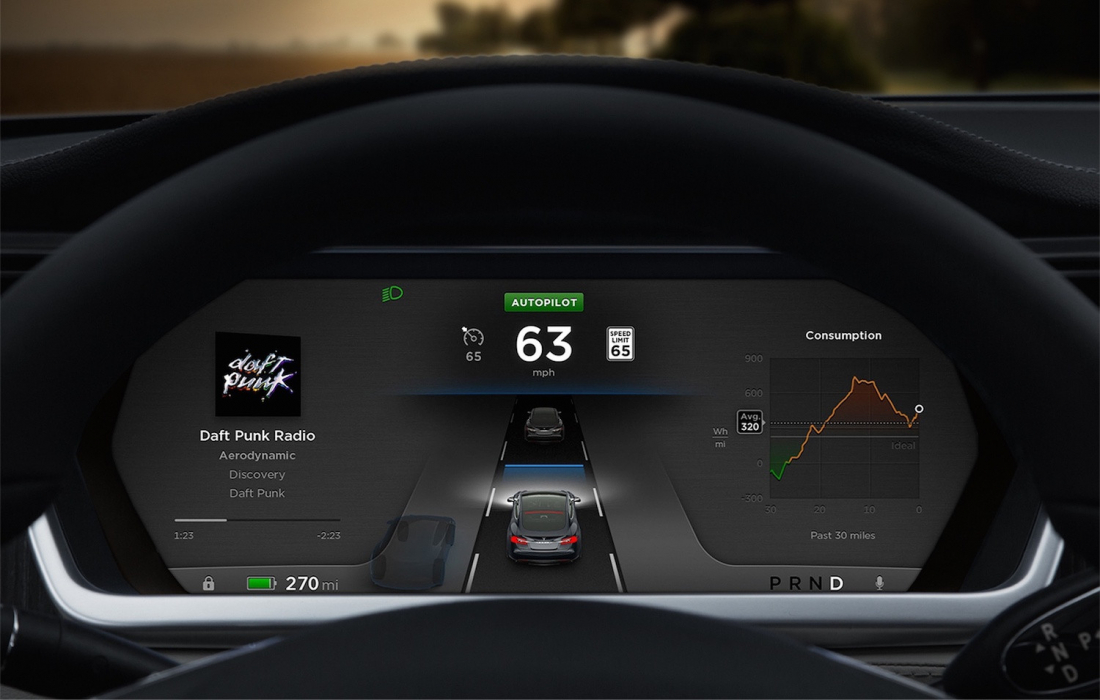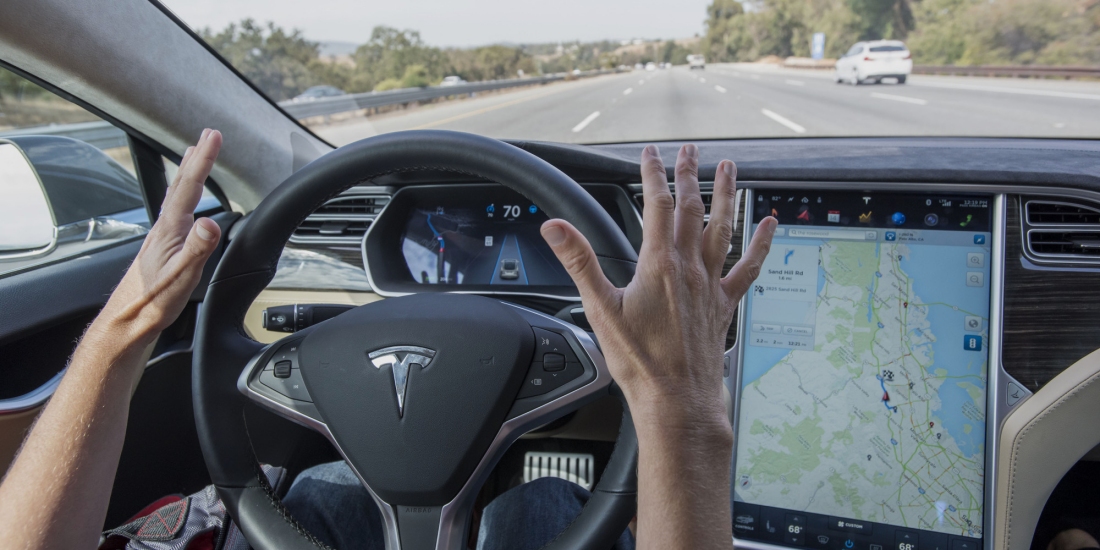Tesla Motors on Sunday outlined a number of enhancements that'll arrive in version eight of its Autopilot software including a more prominent role for the radar system that was added to all vehicles in October 2014.
Up to this point, the radar system has been used solely as a supplementary sensor to the primary camera and image processing system. After careful consideration, however, Tesla believes radar can be used as a primary control sensor alongside the camera rather than simply supplementing it.
Because of how strange the world looks in radar, the challenge in using it as a primary detection system is to avoid false alarms.
A discarded soda can on the road with its concave bottom facing the vehicle, for example, can appear to radar as a much larger (and potentially dangerous) object. That's because metallic objects look like a mirror to radar and those with a dish shape can amplify the signal to many times its actual size. Having the car hit the brakes every time it sees a non-threatening object such as this would be annoying at best and at worst, could cause injury.

To solve the issue, Tesla said version 8.0 of its software unlocks access to six times as many radar objects with a lot more information per object. The system will also assemble radar snapshots - captured every tenth of a second - into a 3D "picture" of the world. This will help the system determine if an object is moving and help determine the probability of a collision.
Tesla described another situation that's difficult for radar to handle and how they plan to tackle it.
A vehicle approaching an overhead highway road sign that is positioned on the rise in the road or a bridge where the road dips underneath can appear to the system as a potential obstruction. Navigation and GPS data isn't enough to determine whether or not the car will pass under the sign / bridge and by the time the pitch in the road changes, it's too late.
In such situations, fleet learning (in which vehicles report to a Tesla database the position of road signs, bridges and other stationary objects) comes in handy. With other vehicles having already mapped out the area, fleet data can be used to help other vehicles navigating the same stretch of road determine what is safe and thus, cut back on excessive, unnecessary braking.
Other quick-hit changes in the coming update include the ability for a vehicle in Autopilot mode to offset its position in a lane when overtaking a vehicle driving close to the lane edge and the use of amplified braking in an emergency.
Tesla also said that after further data gathering, a car will activate Autosteer to help avoid a collision when the probability of impact is ~100 percent. What's more, a Tesla vehicle will not be able to reengage Autopilot until it has been put into park if a user has ignored repeated alertness warnings.
Tesla owners can expect the new software to arrive in the coming weeks.
Lead image courtesy David Paul Morris, Getty Images
